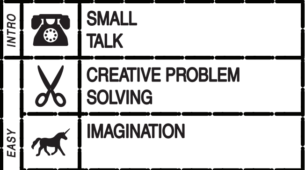Secret Hitler is a board game made by Goat, Wolf, & Cabbage LLC that has gained enormous popularity since it was first published in 2016. While the game also offers an online version, this review will focus on the physical board game. The game’s intended audience is a group of people, preferably friends, who are young adults or older. It can be played with anywhere from 5 to 10 players, and the differences in numbers result in different game elements and strategy.
There are many games that utilize the idea of social deception, but I think that Secret Hitler is able to foster an entirely different and unique gameplay. By allowing all players’ actions to have an influence on the game, Secret Hitler combines social deception with action and task based missions for each team. And through the nature of giving all players incomplete information of the others, elements of trust, coercion, and task completion are tested throughout.
The first thing that struck me was the fact that all players, regardless of if they’re a fascist or a liberal, have actionable tasks to do. In comparison to a game like Mafia, even the players a part of the larger group have more to do. They will interact with the cards and put down the ones that they can in order to defeat the fascists. This design choice really makes the game what it is. I feel that when playing Mafia, I enter each game hoping that I’m the mafia, doctor, or detective. If I’m not, I don’t have much action and get bored. In Secret Hitler, however, I find myself excited to take on whatever role comes at me because I know that I will have the opportunity to do more than just vote or accuse people. Additionally, the game provides more insight into other players at the table. In Mafia, lots of the accusations are based on looks and vibes but nothing really concrete, leading to it usually coming down to more luck than anything. In Secret Hitler, each player is actually seeing a decision made for which card to play and who to nominate as the next chancellor, leading to accusations and discussions being had about real game-related events. There really is not much I would choose to improve about the game. I noticed that it can be difficult to play in smaller groups, and found that around eight players tended to be the most optimal number. I would look at seeing if there can be different roles or other action events for smaller games in order to help the cohesion of those.
The game has a number of mechanics for the players. When president, the player gets to nominate someone to be chancellor and all other players get to vote. They then draw three cards and get to discard one, leaving the chancellor with two cards to choose from without anyone else seeing. The chancellor makes that decision and places a card on the respective fascist or liberal board. Here there is a ton of room for deception. How can the president strategically choose which card to discard? If a player has two fascist cards, how can they still try and convince everyone else that they had no choice but to play that card? These arguments turn into a very high-strung and energetic aesthetic for a group to play, and I think that is part of what makes it fun for a group of friends to play. There is also the element of teamwork for the fascists. They will know who each other are and try to spend time blending in and helping each other out. In this sense, the element of teamwork is important. You must work together, especially when trying to get Hitler to be voted as chancellor towards the end of the game. The majority of players need to be convinced of this and it creates a dynamic that is more than just on the board but intertwined with the flow of the game.
For those of us who had not played the game coming into it, we unanimously said that Secret Hitler was more fun that games like Mafia and Among Us. We all had a part in the game and had actions to do, unlike Mafia, and being in person and having everyone see every action created a much more fun debate-like setting, unlike Among Us. Additionally, players “die” far less frequently, leading to more participation throughout the game and thus, more fun. The elements of deception were far more real to us as there was no way to hide what had happened in the past. We had one friend who kept being handed two fascist cards when he was a liberal, but the fact that he played the fascist cards more than once led us all to be suspicious of him. Sometimes, deception works in the other way, too, and he needed to find a way to prove to us what he was on our side. Overall, the responsibility and agency that each player has creates a unique and fun experience no matter what a player’s role is.


